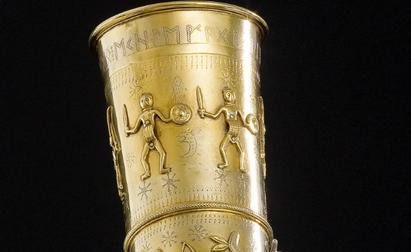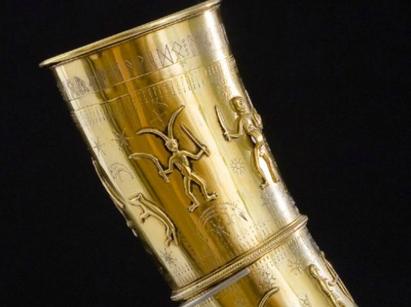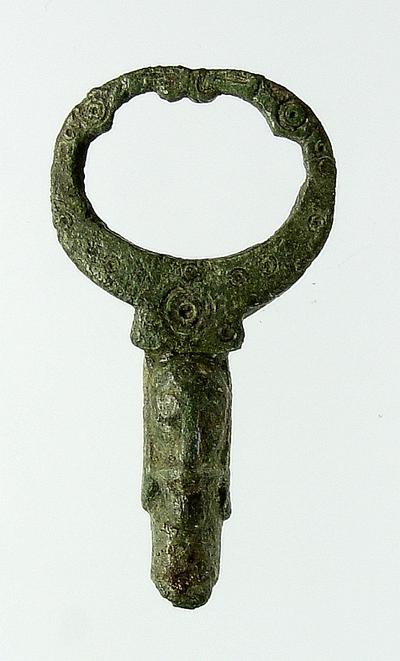Berserkers


Today to go berserk is synonymous with to run amok or be completely out of control. This makes sense given that the word berserk refers to a particular form of combat practised in the Viking Age, in which the fighters threw off their chainmail and tunics, and fought naked. Filled with rage and without fear for his own life, the berserker cast himself into the midst of the battle arousing terror amongst friends and foes alike. The word may also refer to the fact that the fighters had a bear’s strength and wildness.
They were even known to bite their own shields out of pure rage. The berserkers were dangerous warriors and the sagas describe how they could sometimes form whole combat groups that fought in the same bloodthirsty manner. Several of the sagas inform us about berserkers, and how kings and earls deployed them in their armies.
Nakedness as a weapon
The nakedness of the berserkers was in itself a good psychological weapon, because such men were naturally feared, when they showed such disregard for their own personal safety. In addition, the naked body may have symbolised invulnerability and was perhaps displayed to honour a war god. The berserkers were thus dedicating their lives and bodies to the battle.
It is, however, hard to find any archaeological evidence of berserkers. On the other hand, apart from their wildness and lack of clothes, they are unlikely to have been any different to other warriors.

Objects displaying depictions of berserkers
Depictions of berserkers are known dating back to the Iron Age. For instance, on one of the famous Golden Horns found near Møgeltønder, which dates to c. 400 AD, semi-naked men are displayed brandishing weapons. In addition, two of these appear to be wearing horned helmets. The popular image of Vikings wearing horned helmets is now thought to be a myth rather than reality. This is partly due to the fact that no such headgear of a Viking Age date has ever been found. However, two small figures on one of the Golden Horns show that horned helmets were worn before the Viking period. In addition, the fact that the depicted warriors are semi-naked means that we are probably looking at berserkers.
We know of several other depictions of naked warriors. One of these appears on a small metal stamp from Sweden dating to the Iron Age. This was used in the production of decoration for helmets and displays two figures. One of these is naked apart from a horned helmet and a belt in which a sword is placed. He holds a lance in each hand. This figure could easily represent one of the legendary, naked warriors.
